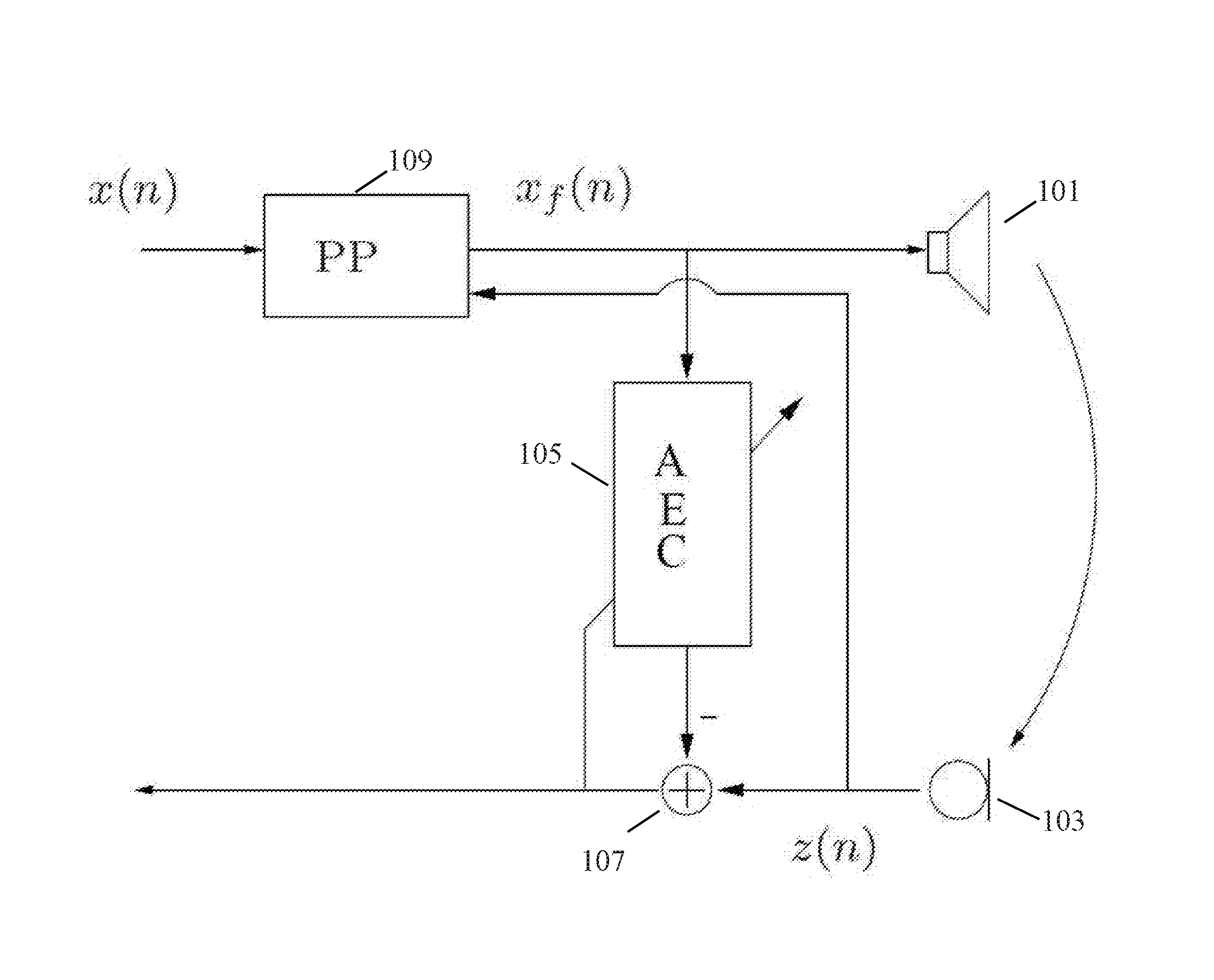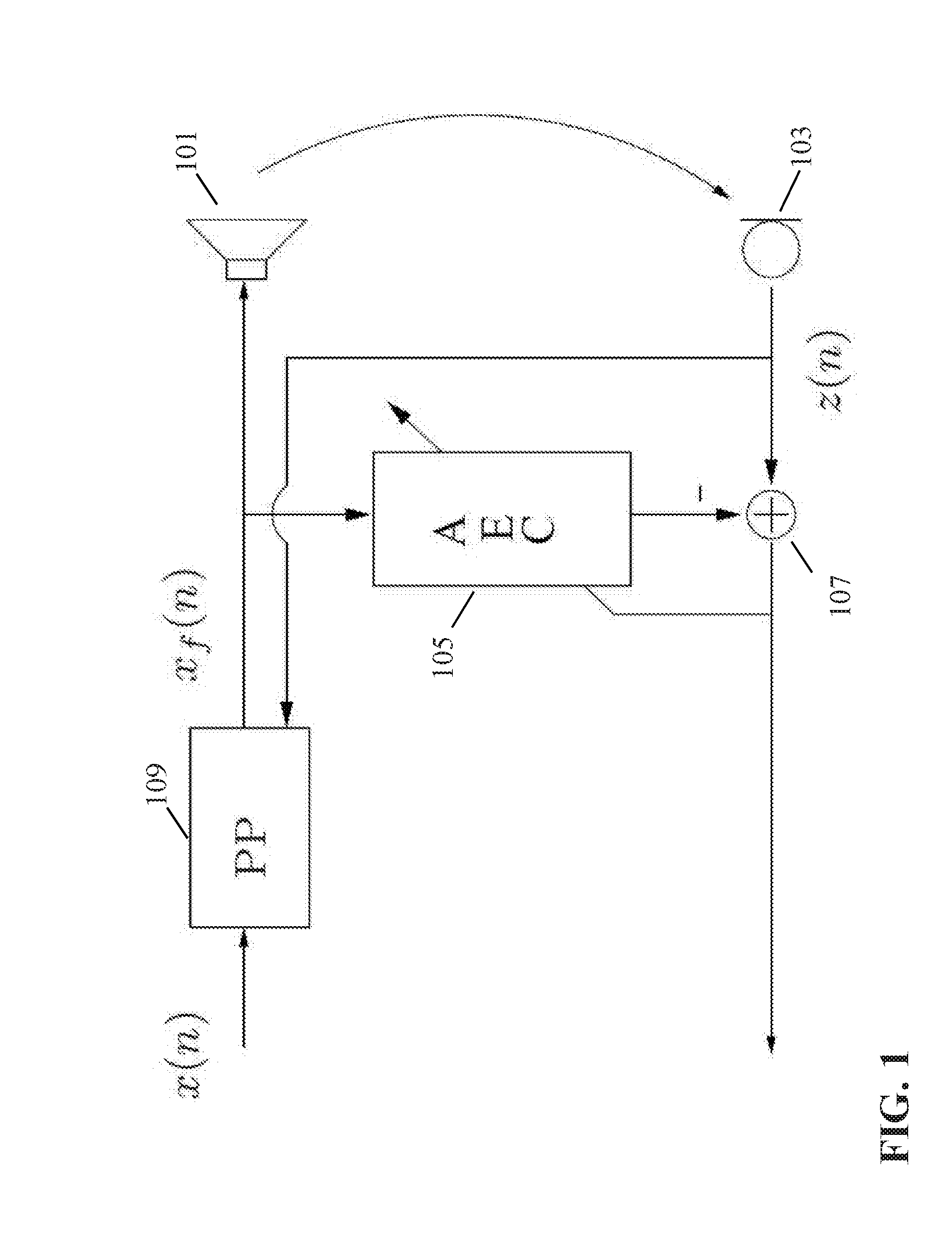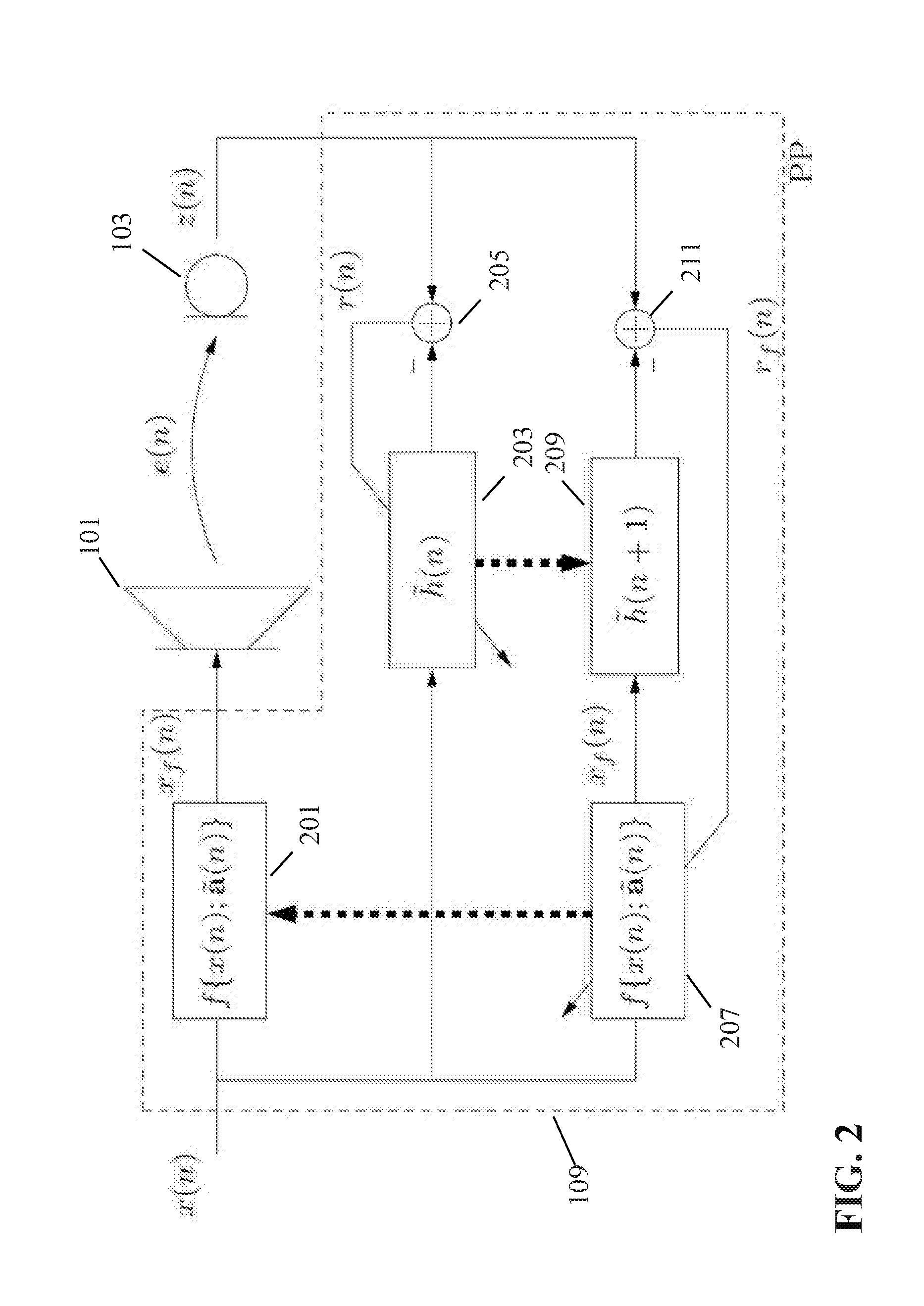Method and apparatus for audio processing
a technology of audio processing and audio apparatus, applied in the direction of echo suppressor/canceller, transducer casing/cabinet/support, electrical transducer, etc., can solve the problem of not being able to completely remove the acoustic echo, the disturbance known as an acoustic echo, and the nonlinearity of loudspeakers, so as to improve linearization, improve the effect of echo cancellation and improve the performan
- Summary
- Abstract
- Description
- Claims
- Application Information
AI Technical Summary
Benefits of technology
Problems solved by technology
Method used
Image
Examples
Embodiment Construction
[0066]The following description focuses on embodiments of the invention applicable to an echo cancelling system for a telecommunication system. However, it will be appreciated that the invention is not limited to this application but may be applied to many other systems and applications.
[0067]FIG. 1 illustrates an example of an audio apparatus in accordance with some embodiments of the invention. In the specific example, the audio apparatus is an echo cancelling system.
[0068]The system comprises a loudspeaker 101 which renders audio in an acoustic environment. A microphone 103 records audio from the acoustic environment in order to produce a signal reflecting audio from a local source in the audio environment. Specifically, the system may be used as part of a telecommunication system wherein the loudspeaker 101 is used to render audio from a remote source and the microphone 103 is used to pick up local audio which is transmitted to the far end. However, a problem in such set-ups is ...
PUM
 Login to View More
Login to View More Abstract
Description
Claims
Application Information
 Login to View More
Login to View More - R&D
- Intellectual Property
- Life Sciences
- Materials
- Tech Scout
- Unparalleled Data Quality
- Higher Quality Content
- 60% Fewer Hallucinations
Browse by: Latest US Patents, China's latest patents, Technical Efficacy Thesaurus, Application Domain, Technology Topic, Popular Technical Reports.
© 2025 PatSnap. All rights reserved.Legal|Privacy policy|Modern Slavery Act Transparency Statement|Sitemap|About US| Contact US: help@patsnap.com



